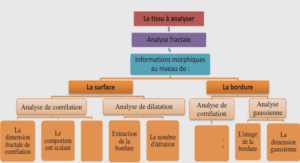The use of colour in imaging continues to grow at an ever increasing pace. Every day, most people in the industrialised parts of the world are users of colour images that come from a wide range of imaging devices; for example colour photographs, magazines, and television at home, computers with colour displays, and colour printers in the office.
As long as the colours are found to be approximatively as expected, people are generally happy with their images. However, with the increased use of colour images, people’s quality requirements also have increased considerably. Just a few years ago, a computer graphics system capable of producing 256 different colours was more than enough for most users, while today, most computers that are sold have true colour capabilities, being able to produce 16.7 million colours.
Furthermore, several professions have particular needs for high-quality colour images. Artists are very concerned about colours in their works, and so are the art historians and curators studying their works. The printing, graphic arts, and photography industries have been concerned about colour imaging for a long time. Most of the colour imaging standards and equipment used today have their roots in these industries. But the past twenty years have seen the field of digital colour imaging emerging from specialised scientific applications into the mainstream of computing. Colour is also extremely important in several other fields, such as the textile and clothing industry, automotive industry, decoration and architecture.
Digital colour imaging systems process electronic information from various sources: images may come from the Internet, a remote sensing device, a local scanner, etc. After processing, a document is usually compressed and transmitted to several places via a computer network for viewing, editing or printing. To achieve colour consistency throughout such a widely distributed system, it is necessary to understand and control the way in which the different devices involved in the entire colour imaging chain treat colours. Each scanner, monitor, printer, or other colour imaging device, senses or displays colour in a different, device-dependent, way. One approach to exchanging images between these devices is to calibrate each colour image acquisition and reproduction device to a device-independent colour space. The exchange of images can then be done in this colour space, which should conform to international standards.
However, colours represent an important but nevertheless limited aspect of the objects that surround us. They correspond to the human perception of its surface under given light conditions. For the needs of, for example, an art curator wanting to control any changes or ageing of the materials in a fine arts painting, or a publisher wanting extra high-fidelity colour reproduction, it becomes necessary to provide a more complete spectral analysis of the objects. This requires technology and devices capable of acquiring multispectral images. A multispectral image may also be used to reproduce an image of the object as it would have appeared under a given illuminant.
In this research, we have investigated several of the aspects mentioned above. We have developed novel algorithms for the colorimetric characterisation of scanners and printers providing efficient and colorimetrically accurate means of conversion between a device-independent colour space such as CIELAB, and the device-dependent colour spaces of a scanner and a printer. Furthermore, we have developed algorithms for multispectral image capture using a CCD camera with carefully selected optical filters. The developed algorithms have been used for several applications, such as fine-arts archiving and colour facsimile.
What is colour? This apparently simple question turns out to be rather difficult to answer concisely. The distinguished researcher Lars Sivik expresses it as follows (Sivik, 1997).
Blessed are the “naive”, those who do not know anything about color in a so-called scientific meaning — for them color is no problem. Color is as self-evident as most other things and phenomena in life, like night and day, up and down, air and water. And all seeing humans know what color is. It constitutes, together with form, our visual world. I have earlier used the analogy with St. Augustine’s sentence about time: “Everybody knows what time is — until you ask him to explain what it is.” It is the same with color.
Misunderstandings are quite common when it comes to colour. One reason is that the word colour is given so many meanings — paint, CIE-values, RGB-values, spectral radiation, perceptual sensations, colour system notation, etc. In the following sections we will discuss some of the important aspects of colour and the relations between them. We establish a scientific framework for the quantisation of colour. As a starting point we cite the most widely accepted technical definition of colour, given by the Committee on Colorimetry of the Optical Society of America in 1940, as cited in Nimeroff (1972).
Color consists of the characteristics of light other than spatial and temporal inhomogeneities; light being that aspect of radiant energy of which a human observer is aware through the visual sensations which arise from the stimulation of the retina of the eye.
We see that this definition relates the psychological entities colour and light to the physically defined radiant energy in the part of the spectrum having a visual effect on the observer. The term psychophysics is thus often employed in colour science, meaning the science dealing with the relation between the physical attributes of stimuli and the resulting sensations.
Aristotle viewed all colour to be the product of a mixture of white and black, and this was the prevailing belief until Sir Isaac Newton’s prism experiments provided the scientific basis for the understanding of colour and light (Newton, 1671). Newton showed that a prism could break up white light into a range of colours, which he called the spectrum , and that the recombination of these spectral colours re-created the white light. Although he recognised that the spectrum was continuous, Newton used the seven colour names red, orange, yellow, green, blue, indigo, and violet for different parts of the spectrum by analogy with the seven notes of the musical scale. He realised that colours other than those in the spectral sequence do exist, but noted that (Newton, 1730, p.158) .
All the Colours in the Universe which are made by Light, and depend not on the Power of Imagination, are either the Colours of homogeneal Lights [i.e., spectral colours], or compounded of these, …
1 Introduction |






